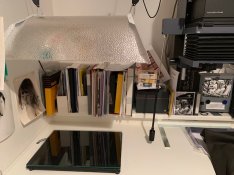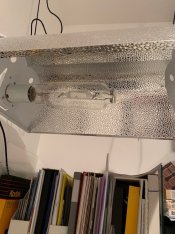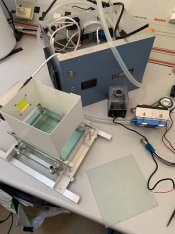I'd much rather deal with digitally enlarged negatives - no dust, you can deal with any contrast issues or mechanical flaws your original might have prior to printing, and once you learn how to do it properly, it's a very simple set of repetitive steps to make it. And if you're feeling lazy, you can just use curves other people have posted on the internet to skip a lot of the boring, repetitive steps that go into making a digital negative. Plus, if you damage the negative, you can just reprint it.
Having done the digital negative step several hundred times now as part of a project I'm working on, it's a superior technique. I don't want/need a UV lamphouse that is so powerful it can set my negatives on fire and/or blind me. For an investment of $200, I have an LED light source that covers 16x22 inches completely evenly, and produces a properly exposed Palladium print in 2 minutes. I can use it 24/7/365, in any weather.
I won't say the UV enlarger is a waste of time - there's always something to be learned by attempting, even (or especially) if it ends in abject failure, or does not produce a result that is immediately obvious as an improvement. But I would argue that a UV-based enlarger is, commercially anyway, a dead end, as it caters to an increasingly small audience of people who want to do things the really hard way.
















